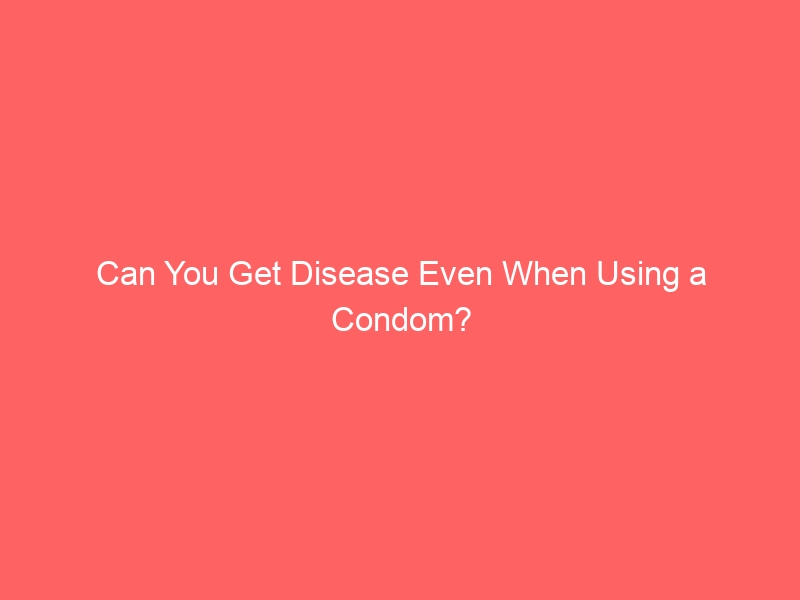When it comes to sexual health, you might wonder, "Can you get disease with condom?" While condoms are a highly effective barrier against many sexually transmitted infections (STIs), they aren’t foolproof. There are common misconceptions surrounding their use that can leave you vulnerable. Factors like improper usage and the type of infection can impact your level of protection. In this article, you’ll learn about the realities of condom effectiveness and best practices to keep yourself safe.
Understanding Condom Effectiveness
Condoms significantly reduce the risk of sexually transmitted infections, but they’re not 100% effective. They can break or slip off during use, which increases the chances of exposure. Some STIs can be transmitted through skin-to-skin contact, even if you’re using a condom. It’s important to use condoms correctly and consistently to maximize their effectiveness. Being aware of your partner’s sexual health also plays a crucial role in prevention.
Common Misconceptions About Condom Use
Many people believe that using a condom completely eliminates the risk of sexually transmitted infections, but that’s not always true. You might think that as long as you’re using a condom, you’re safe, but that’s a misconception. Condoms can break or slip off, which can expose you to infections. Additionally, some STIs can be transmitted through skin-to-skin contact, even when a condom’s used. It’s essential to understand that while condoms significantly reduce risk, they’re not foolproof.
Factors Affecting Protection Levels
Factors like the correct use of protection and the presence of cuts or sores can influence how well you’re protected. If you don’t use a condom properly, it can break or slip off, reducing its effectiveness. Exposure to bodily fluids through open wounds can also increase your risk of transmission. Additionally, certain STIs can spread through skin-to-skin contact, even if you’re using a condom. Always remember that no method is 100% foolproof, so staying informed is crucial.
STDs That Can Transmit Despite Condom Use
Some STDs, like herpes and HPV, can still be transmitted even if you’re using a condom. You might not realize that these infections can spread through skin-to-skin contact. Even with proper usage, condoms can’t cover all affected areas. It’s essential to be aware of the risks and communicate with your partner. Regular testing and open conversations can help reduce the chances of transmission.
Best Practices for Condom Use
Using condoms properly can significantly reduce your risk of sexually transmitted infections. Make sure to check the expiration date before use, as expired condoms can be less effective. Always store condoms in a cool, dry place to prevent damage. When putting on a condom, pinch the tip to leave space for semen, and roll it down to the base of the penis. After ejaculation, hold the condom at the base while withdrawing to prevent spillage.
Additional Protective Measures to Consider
While condoms are a crucial part of safer sex practices, they aren’t foolproof. It’s important to consider additional protective measures to further reduce your risk. Let’s look at some key points you shouldn’t overlook.
Regular STI Testing Importance
Regular STI testing is essential for maintaining your sexual health and ensuring peace of mind. You shouldn’t rely solely on condoms for protection, as they don’t eliminate all risks. Regular testing helps catch any infections early, ensuring better treatment outcomes. It also allows you to communicate openly with your partners about your sexual health. Prioritizing consistent testing shows responsibility and care for both yourself and others.
Vaccinations for Preventative Care
Vaccinations can significantly enhance your preventative care strategy against various infections. They help protect you from serious diseases that condoms alone can’t prevent. Staying up to date with your vaccinations is crucial for maintaining your overall health. It’s essential to discuss vaccination options with your healthcare provider. By doing so, you’re taking proactive steps to safeguard your well-being.
Frequently Asked Questions
What types of condoms offer the best protection against stds?
When it comes to condom types that offer the best protection against STDs, latex condoms are generally considered the most effective. If you’re looking for alternatives, polyurethane and polyisoprene condoms also provide good protection, but make sure they’re labeled for STD prevention.
How do different sexual activities affect the risk of disease transmission?
Different sexual activities can significantly influence your risk of disease transmission, with vaginal and anal sex generally posing higher risks compared to oral sex. Even with protective measures, some activities may still carry risks, so it’s crucial to be aware of how each type can affect your health.
Can you rely solely on condoms for protection against pregnancy?
You can’t rely solely on condoms for protection against pregnancy, as they can sometimes break or be used incorrectly. It’s a good idea to consider additional methods, like hormonal contraceptives, for extra safety.
If you’re curious about safer sex options and the advantages of using non-latex condoms, I highly recommend visiting this informative page on understanding the benefits of non-latex condoms. It offers valuable insights that can enhance your sexual health knowledge and help you make informed choices. Check it out here: nonlatex condoms.
